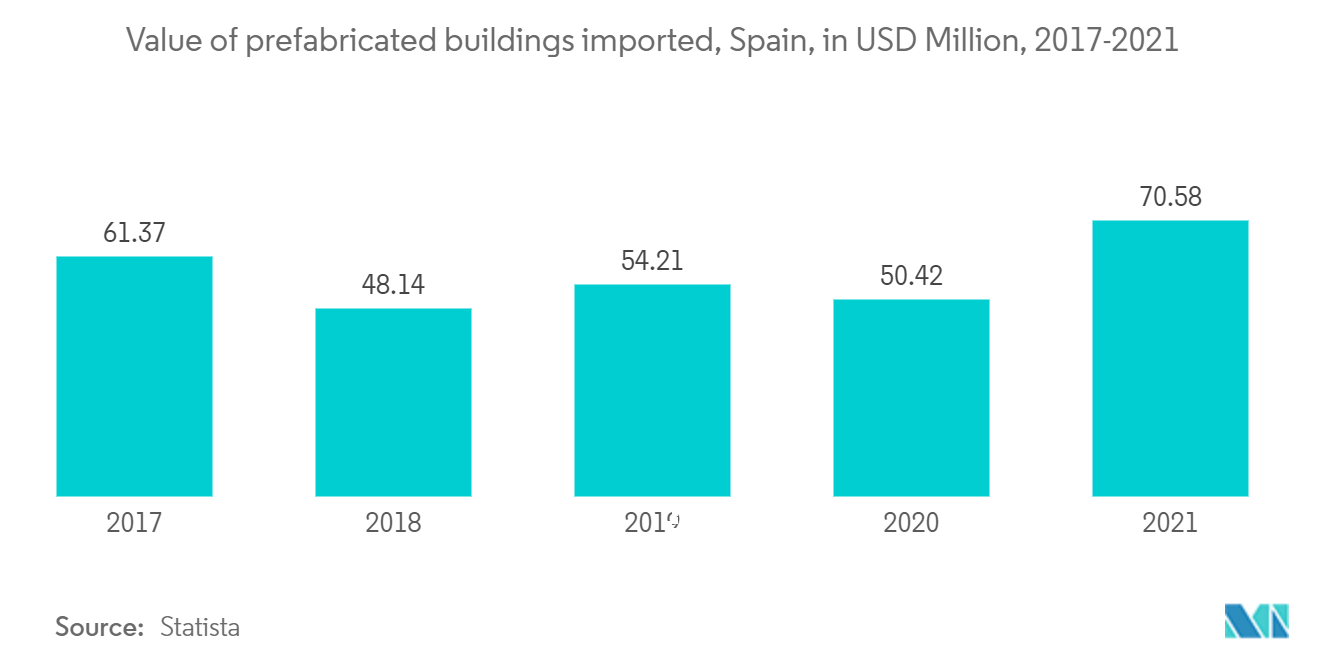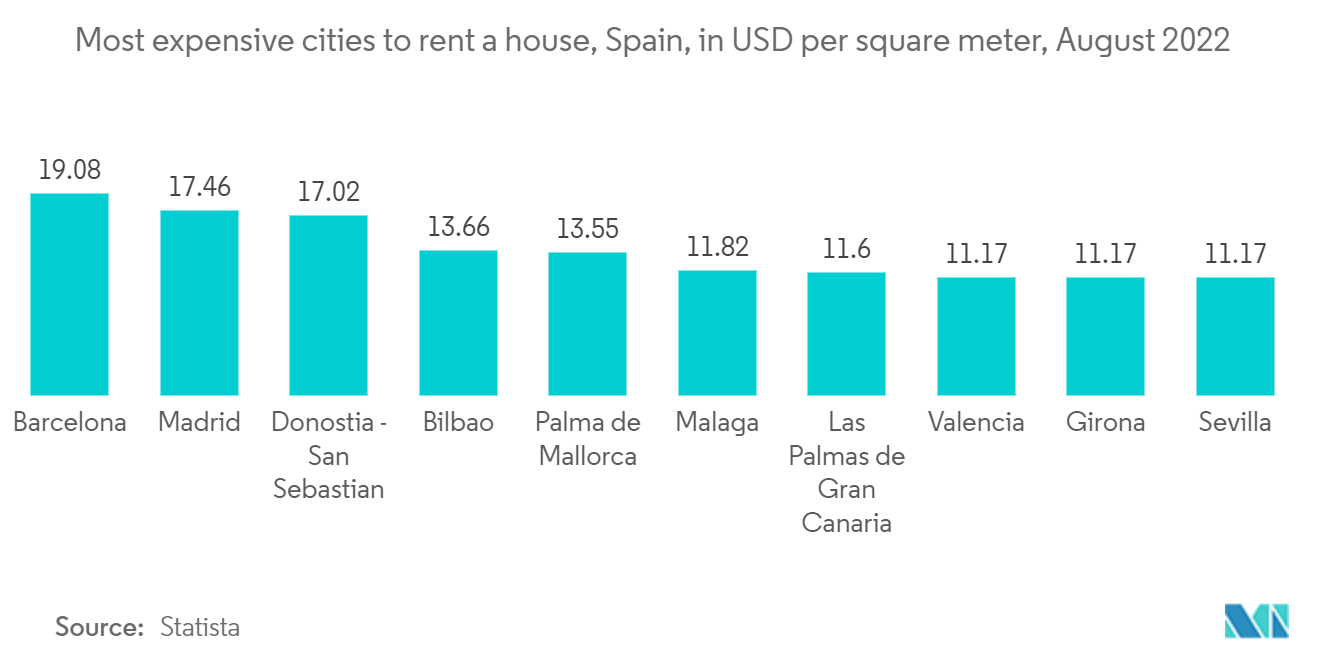Market Trends of Spain Manufactured Homes Industry
This section covers the major market trends shaping the Spain Manufactured Homes Market according to our research experts:
Increasing Home Ownership Driving the Market
- As per the recent INE sales figures for August 2022, there is no decrease in the number of transactions. The number of transactions in August 2022 was still nearly 15% higher than in the same month last year, even though the year had already been exceptionally strong in terms of transactions. Compared to the pre-COVID period, the transactions in August were still 60% and 28% higher than in August 2019 and 2018, respectively. The number of transactions is expected to decline in the coming years. The cost-of-living crisis, combined with rapidly rising mortgage rates and weakening economic growth, is exerting significant downward pressure on real disposable income and creating significant headwinds for the property market.
- On the other hand, the real estate market may benefit from structural growth in the number of households in the coming years. The number of households is increasing faster than population growth due to several nuclear households, which supports the demand in the real estate market. Over the last two decades, more than 20 million new households have been added, representing a 70% increase. Household growth may continue to support the real estate market in the coming years. According to the INE, the number of households will increase by 1.1 million by 2035, representing a 5.3% increase in 13 years, primarily due to a significant increase in the number of single and two-person families.
- High inflation and energy prices are already putting a strain on household purchasing power. While the prospect of rising interest rates may temporarily cause households to improve their purchasing decisions to beat rising interest rates, this effect will gradually fade. On the other hand, demand for real estate remains high, along with the number of transactions and mortgage production. Prices may continue to rise as supply grows slower than the number of households. Spanish house prices have risen slower than in most European countries, making a correction less likely.

Increasing Housing Rental Driving the Market
- According to the INE, a Spanish statistics agency, more than 24% of Spanish households were renting at the end of 2021, one of the highest figures recorded in the last decade. The Spanish population that rents the most are young people with the fewest economic resources to cover the initial costs of purchasing a home. As the home was seen as a refuge for people during the pandemic, it caused cultural changes in the Spanish population. During this period, many Spanish families decided to renovate or even change their homes for more comfortable spaces, which was only possible for many by renting.
- In this new scenario, the evolution of available supply is critical as it was previously limited, and its prices were not always in line with its quality. Creating a quality housing stock tailored to different population groups is one of the main challenges being tackled by many private and public bodies. Madrid and Barcelona, Spain's two most populous cities, have the highest proportions of rental supply, reaching nearly 50% in Madrid at the end of the year's second quarter.

